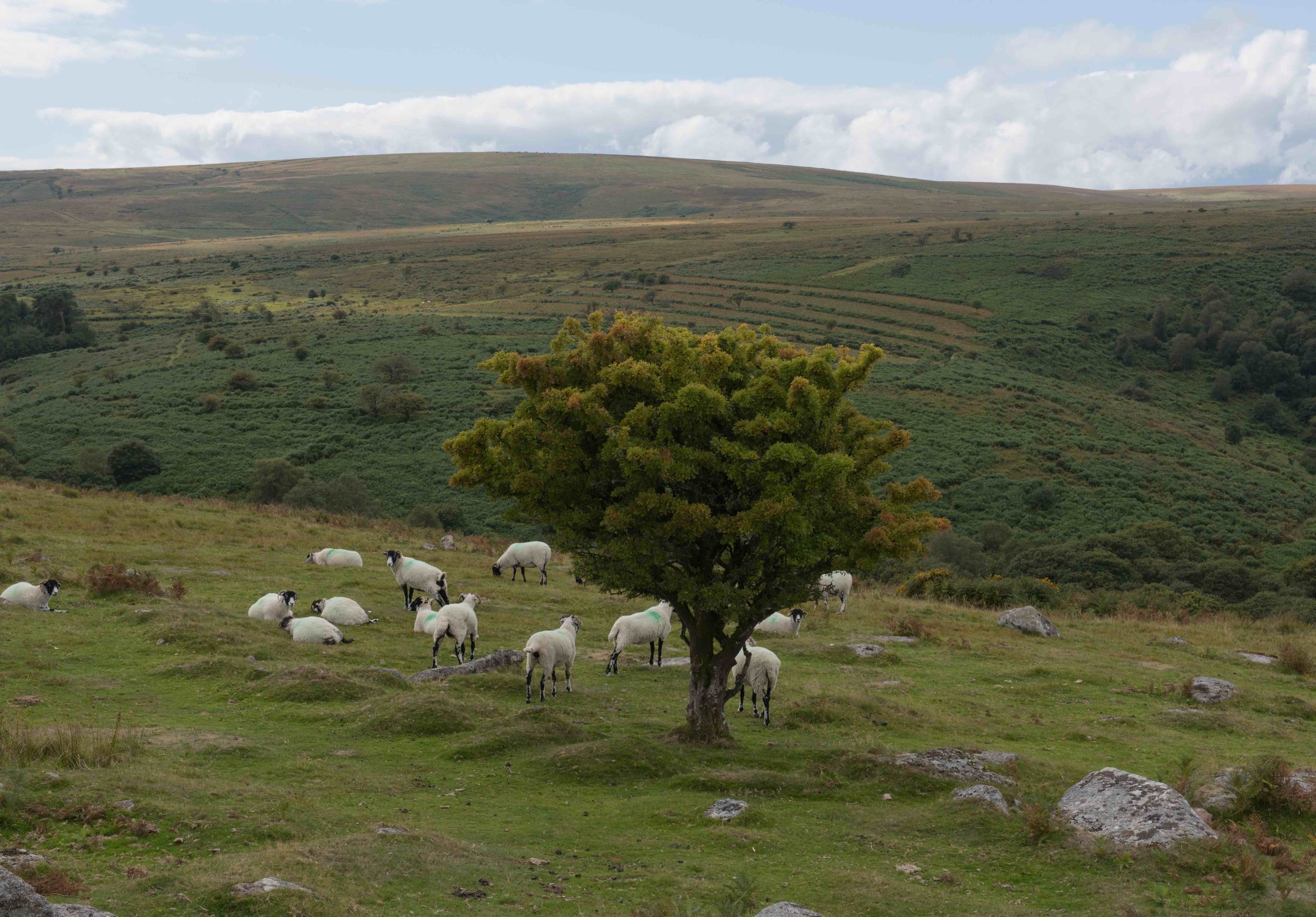
Where are we working?
This is a national project that is sharing learning from four areas: Shropshire Hills, Yorkshire Dales, Lake District and here in Dartmoor.
The Dartmoor commons that are part of our project are:
• Walkhampton Common
• Harford and Ugborough Moors
• Holne Moor
What are we working on?
We’re working with commoners and lots of other people to produce ‘commons visions’ – it’s our way of mapping out and delivering good things for the public, heritage and nature across Dartmoor. This includes:
• Improving herd health through understanding the nutrition avaible to stock on the common.
• Trailing new methods of Molina control on Dartmoor’ s blanket bogs.
• Working with commoners and landowners to protect and restore spring mires.
• Understanding the health and distribution of trees on the commons and working together with other people to see how it could be improved.
• Investigating and restoring neolithic stone rows on Harford and Ugborough.
• Managing bracken for butterflies and surveying birds across the commons.
How to enjoy Dartmoor’s commons
Upland commons are free for everyone to access and enjoy. Some of the best places to experience commons and their iconic views are on the hills and moors of Dartmoor.
We’re sharing just a few ideas on how you can enjoy your day and notice why these special places are so important in responding to some the challenges we face in the 21st century.
-
There’s over a million hectares – that’s over 247 million football pitches – of common land in England.
These spaces are found in National Parks and Areas of Outstanding National Beauty across the country.
Upland commons are free for everyone to access and enjoy and some of the best places to experience them and their iconic views are on the hills and moors of Devon, Shropshire Hills, the Lake District and the Yorkshire Dales.
Upland commons aren’t just picture perfect either. They bring a whole range of other benefits. Some of these are easy to spot and some of which can take you a little more time to notice.
There are tens of millions of day trips to common land each year and visitors make a significant contribution to the rural economy through tourism.
Planning a trip to Devon, Shropshire Hills, the Lake District or the Yorkshire Dales? Here’s just a few ideas on how you can enjoy your day and notice why these special places are so important to some of the challenges we face in the 21st century.
-
Step out on foot onto upland commons and you’ll experience beautiful landscapes. You’ll be rewarded with some of the most iconic views in the country. Try a day in the mountains on Catbells in the Lake District or Brant Fell in the Howgills.
-
Look out for sources of water. Paddling in a river, stream or a waterfall isn’t just good fun. This could be your future drinking water ¬– 10% of Britain’s water supply comes from upland commons.
-
There are 3,000 scheduled ancient monuments protected on British commons. They include stone circles, standing stones and roman camps. Spend your day in the outdoors, learning about history.
-
Commons support a greater diversity of wildlife than any other type of farmland. Try bird spotting – you’ll find the Dartford warbler in the south of the UK and the curlew in the Lakes and the Dales.
-
You’ll sometimes need more of a trained eye to spot these, but commons are filled with healthy peat bogs. These are areas of soil that are wet and they are covered in plants that rot down to form new peat. They trap millions of tonnes of carbon. They help us tackle climate change.
-
Many of the UK’s heritage breeds are closely associated with common land. You’ll get up close to different breeds of sheep, ponies and cattle.Each flock on the commons has an area of land where they stay without fencing, this is known as a ‘heaf’, ‘heft’ or ‘lear’. This way of shared land management is called commoning and has protected some of the UK’s most spectacular landscapes for a thousand years.

Commons in Dartmoor
The commons form the heartland of Dartmoor and this vast open space is the main reason Dartmoorwas designated a National Park in 1951. 37% of the National Park is common land, made up of 90 Home Commons and the Forest of Dartmoor. These commons account for 75% of Dartmoor’s moorland.
On the high moor you will see mainly Scottish Blackface sheep and Galloway cattle. On the lower slopes you will also find South Devon cattle and the rare Whiteface Dartmoor sheep amongst other breeds whilst Dartmoor ponies roam the whole. The grazing of this livestock maintains the mosaic of vegetation within the acid grassland, wet and dry heath, blanket bog and valley mire habitats. Thevast plateau is broken up by steep sided wooded valleys, fast flowing rivers and rocky tors.
45% of South West Water’s daily water supply for its customers falls as rain on Dartmoor’s uplands before making its way to their taps. Dartmoor’s peat bogs are where nine of Devon’s major rivers originate. Healthy upland peat bogs play an important role in storing and releasing clean water into rivers and reservoirs, and in preventing flooding. The 15,800 ha of peat in the National Park is estimated to store 13.1 megatonnes of carbon.
What’s happening on Dartmoor’s commons?
Commons Stories
Explore written and photographic portraits of people, short videos, audio clips, and reflections on events through the year and on some of the challenges of building sustainable futures for people and landscape in these special places.
Tamsin Thomas, Dartmoor Project Officer
After achieving her degree in Environmental Science in 2018, Tamsin worked for Natural England securing funding from NLHF for a £10 million project to restore and conserve sand dunes across the UK. More recently she has been working with the University of Exeter on international projects focussing on food security challenges.
Get in touch with Tamsin:







